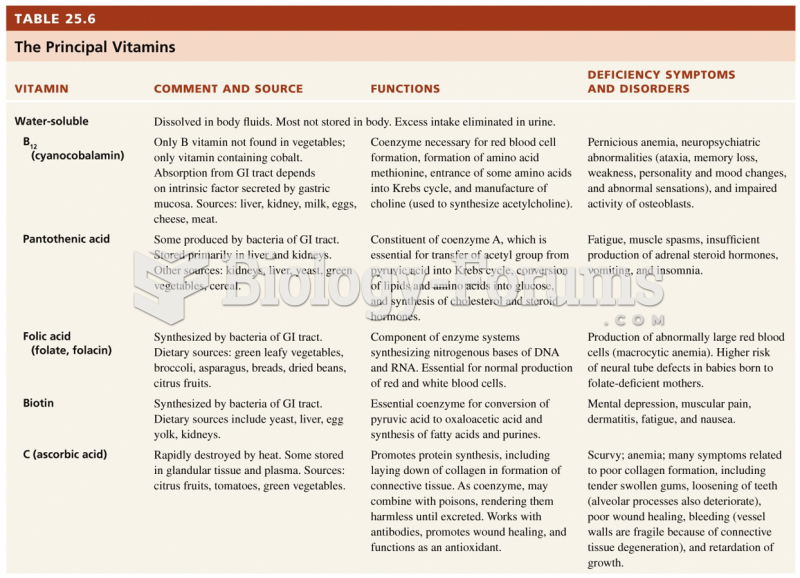Answer to Question 1
sterile intestinal tract
Answer to Question 2
Three different forms of vitamin A are active in the body: retinol, retinal, and retinoic acid. Collectively known as retinoids, these compounds are commonly found in foods derived from animals. Foods derived from plants provide carotenoids, some of which can be converted to vitamin A. The most studied of the carotenoids with vitamin A activity is beta-carotene, which can be split to form retinol in the intestine and liver. The cells can convert retinol and retinal to the other active forms of vitamin A as needed. The conversion of retinol to retinal is reversible, but the further conversion of retinal to retinoic acid is irreversible. This irreversibility is significant because each form of vitamin A performs a specific function that the others cannot. Several proteins participate in the digestion and absorption of vitamin A. After absorption via the lymph system, vitamin A eventually arrives at the liver, where it is stored. There, a special transport protein, retinol-binding protein (RBP), picks up vitamin A from the liver and carries it in the blood. Cells that use vitamin A have special protein receptors for it, and its action within each cell may differ depending on the receptor. For example, retinoic acid can stimulate cell growth in the skin and inhibit cell growth in tumors.
Vitamin A plays two indispensable roles in the eye: it helps maintain a crystal-clear outer window, the cornea, and it participates in the conversion of light energy into nerve impulses at the retina. Some of the photosensitive cells of the retina contain pigment molecules called rhodopsin. Each rhodopsin molecule is composed of a protein called opsin bonded to a molecule of retinal, which plays a central role in vision.
Despite its important role in vision, only one-thousandth of the body's vitamin A is in the retina. Much more is in the cells lining the body's surfaces. There, the vitamin participates in protein synthesis and cell differentiation, a process by which each type of cell develops to perform a specific function.
Vitamin A promotes differentiation of epithelial cells and goblet cells, one-celled glands that synthesize and secrete mucus. Mucus coats and protects the epithelial cells from invasive microorganisms and other potentially damaging substances, such as gastric juices.
Vitamin A also supports reproduction and regulates growth. In men, retinol participates in sperm development, and in women, vitamin A supports normal fetal development during pregnancy. Children lacking vitamin A fail to grow; given vitamin A supplements, these children gain weight and grow taller.







